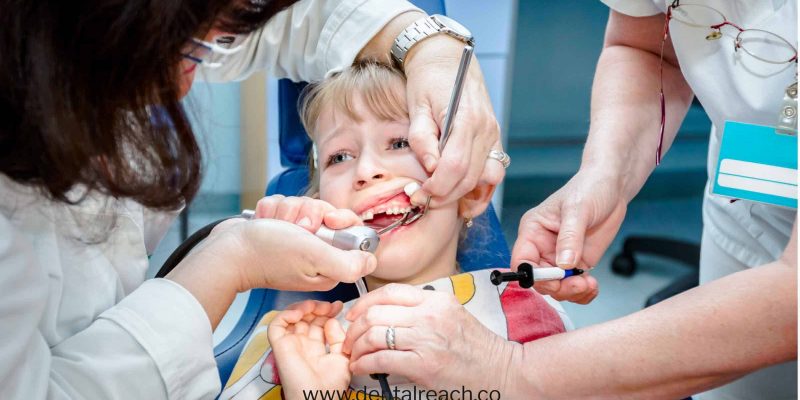Dental anxiety in children leads to uncooperative behaviour, posing challenges for dentists in a clinical setting. According to studies, girls generally exhibit more dental anxiety than boys. Other proposed etiologic factors include socioeconomic status, culture, parental anxiety, negative experiences from dental treatments, and temperament of the child. Clearly, dental F/A is a multidimensional construct influenced by biology and environment.
Behaviour management is fundamental in dealing with children’s F/A in a clinical setting. Nearly one in four children is seen by paediatric dentists present with management difficulties.
There are currently 14 behaviour management therapies described by American Academy of Paediatric Dentistry (AAPD).
Basic behaviour guidance techniques include positive pre-visit imagery, direct observation, tell-show-do (TSD), ask-tell-ask, voice control (VC), non-verbal communication (NC), positive reinforcement and descriptive praise (PR), distraction (Dis), memory restructuring, parental presence/absence (PP/A) and nitrous oxide/oxygen inhalation (NO). Advanced behaviour guidance techniques include protective stabilization (PS), sedation (Sed) and general anaesthesia (GA).
Dentists resort to more invasive techniques including hand-over mouth (HOM), VC, and active and passive stabilisation for unruly and defiant children to obtain their attention and gain cooperation for treatment 7. Pharmacologic BMTs may be considered222 when non-pharmacological techniques are ineffective or not accepted by parents.
Positive previsit imagery
The functional inquiry from a behavioural viewpoint should be conducted. During the inquiry, there are two primary goals:
- Learning about the patient and parental concerns
- Gathering information for cooperative ability of the child
Functional inquiries are conducted in two ways:
- Paper and pencil questionnaire completed by the parent
- Direct interview of child and parent
Pre-appointment behaviour modification can be performed with live patient models such as siblings, children and parents. Many pedodontists allow parents into their working place to see the experience of their small patients. A parent’s recall visit offers an excellent modeling opportunity by observing child at dental examination. After seeing their parents in the chamber the patient become cooperative and sits in the dental chair on his/her own. These previews should be selected carefully.
Tell Show Do (TSD)
Euphemisms or word substitutes are like second language for pediatric dentists. Examples of word substitutes for explaining procedures to children are rubber dam as rubber raincoat.
- Sealant as tooth paint
- Air syringe as wind gun
- Water syringe as water gun
- Suction as vacuum cleaner
Voice Control
Sudden and firm commands are used to get a child’s attention or to stop them from whatever they are doing. Slow and deliberate cadence function like music is another form of voice control. In both cases, what is heard is more important because the dentist is attempting to influence behaviour directly, not through understanding.
Non-verbal communication
Non-verbal messages can be sent to patients or received from them. Body contact can be another form of nonverbal communication. Dentist’s simple act of placing a hand on a child’s shoulder while sitting on a chair-side stool conveys a feeling of warmth and friendship. Greenbaum and colleagues found that this type of physical contact helped children relax, especially those between 7 to 10 years.
Positive Reinforcement
Giving gifts to children has become a fact of commercial life in North America. There is general agreement on the merit of this practice; gifts can be given to patients after successful treatment as a reward. It can be of dental use like toothbrush kit.
HOME (Hand Over Mouth Exercise)
This technique fits the rules of learning theory: maladaptive acts (screaming, kicking) are linked to restraint (hand over mouth) and cooperative behaviour is related to removal of the restriction and praising can be used as positive reinforcement. It is important to stress that aversive conditioning is not used routinely but as a last resort method, usually with children between 3 to 6 years who have appropriate communicative abilities.
Cultural factors also affect behavioural guidance, requiring the utmost attention in today’s increasingly diversified world. All practitioners encounter patients of a different culture daily and in certain instances, may experience difficulty or barriers in communicating treatment objectives and expectations.
References
- Hmud R, Walsh LJ. Dental anxiety: causes, complications and management approach. J Minim Interv Dent. 2009;2(1):67–78.
- Armfield JM, Heaton LJ. Management of fear and anxiety in the dental clinic: a review. Aust Dent J. 2013;58(4):390–407




















Comments